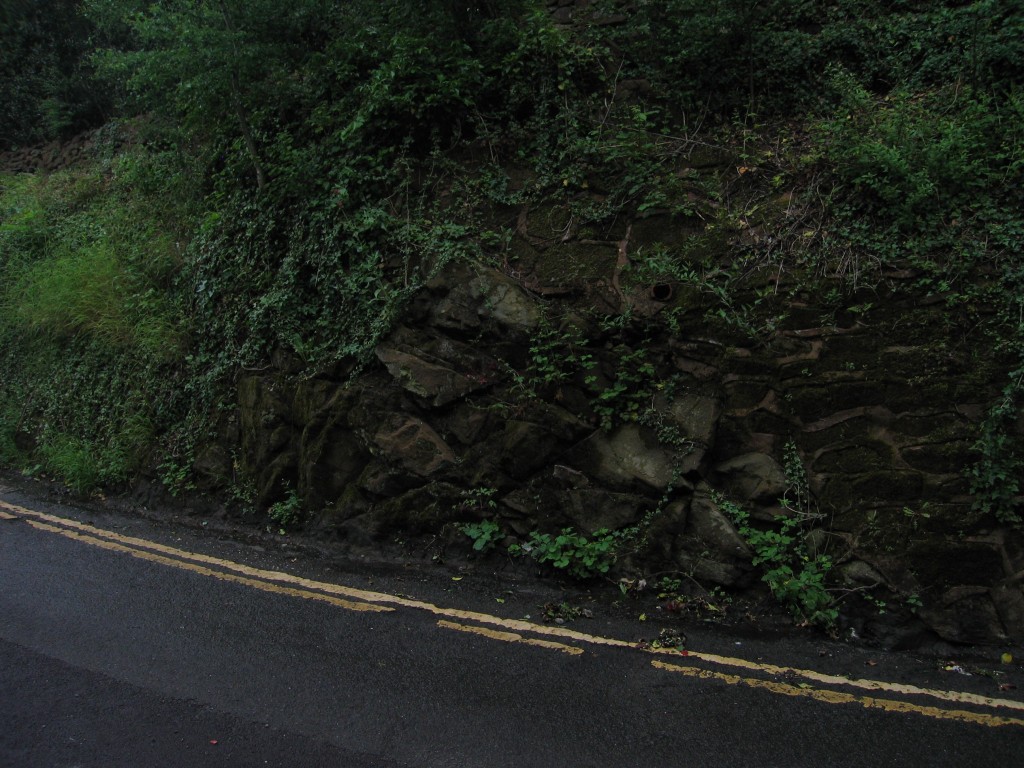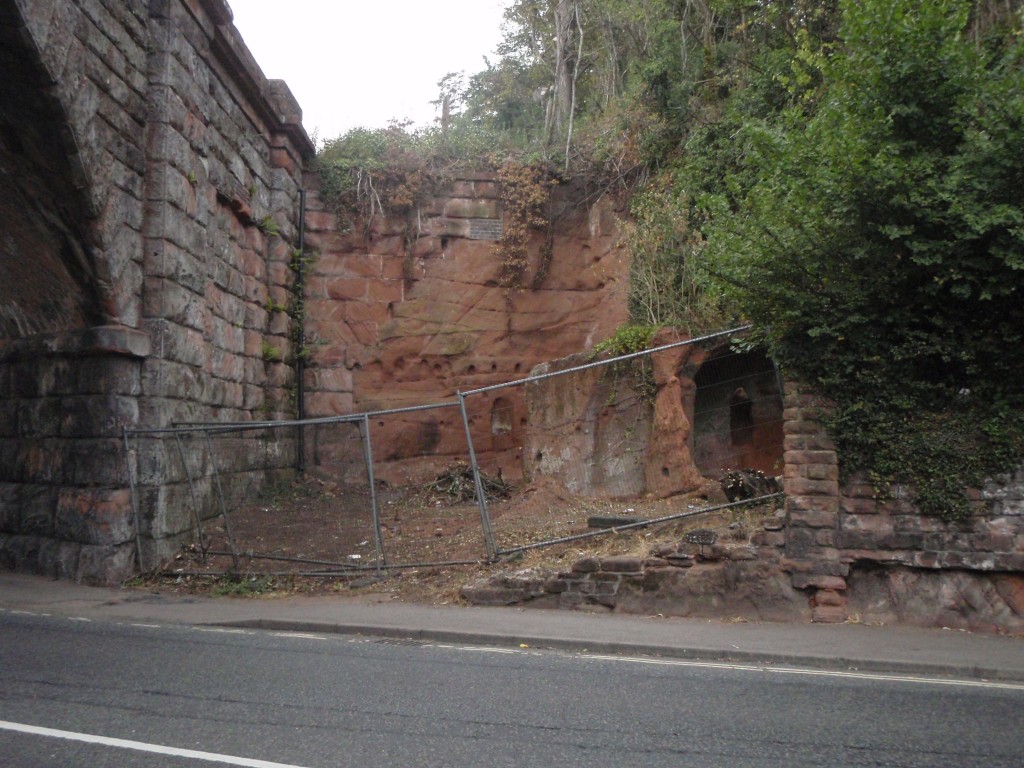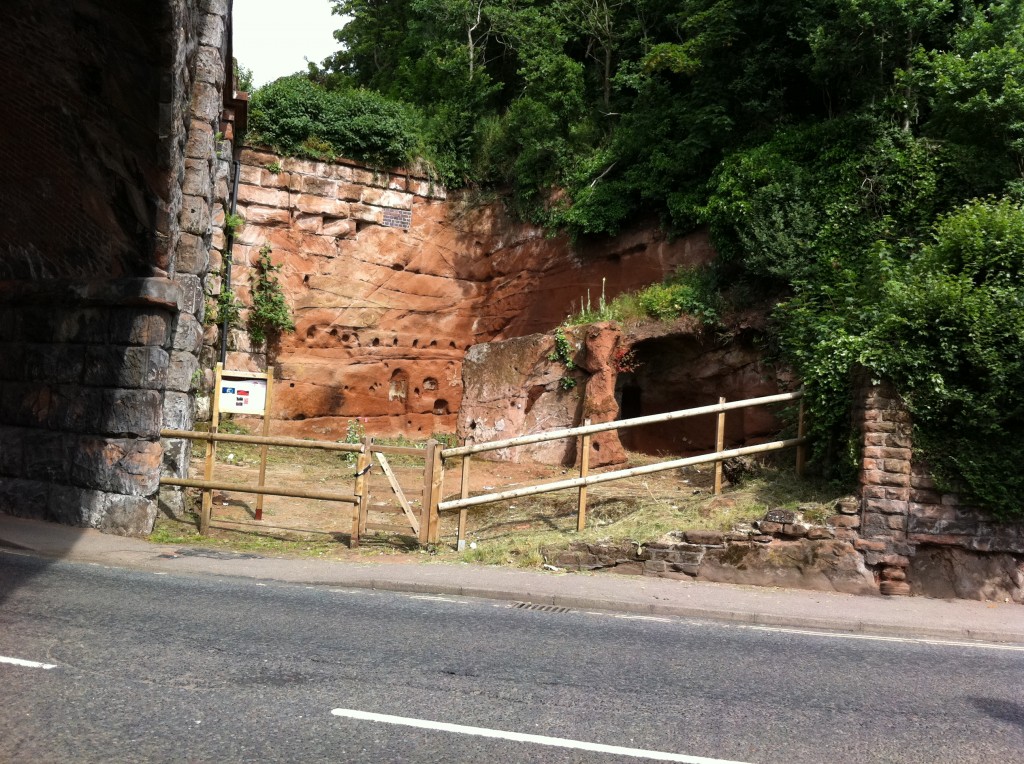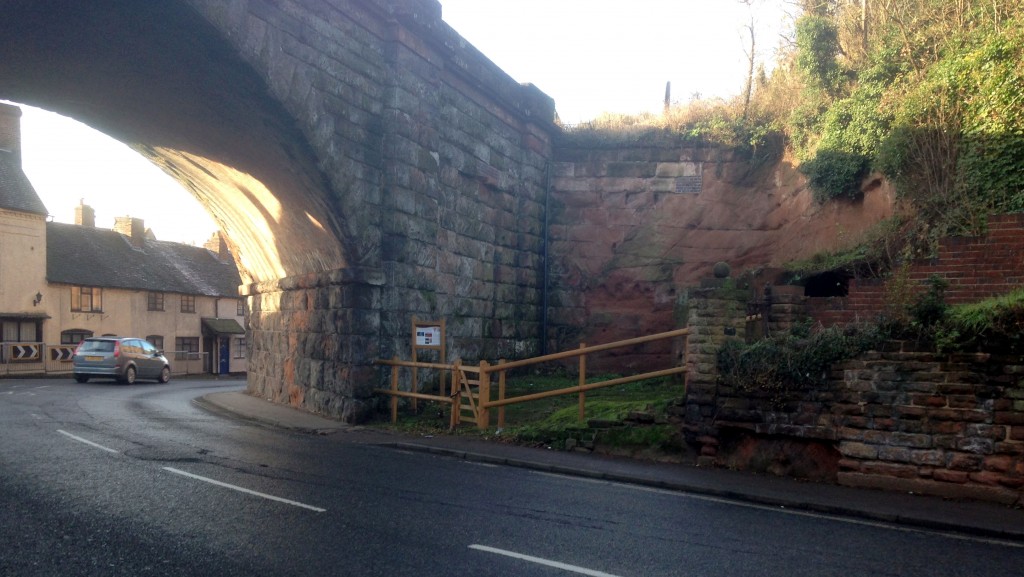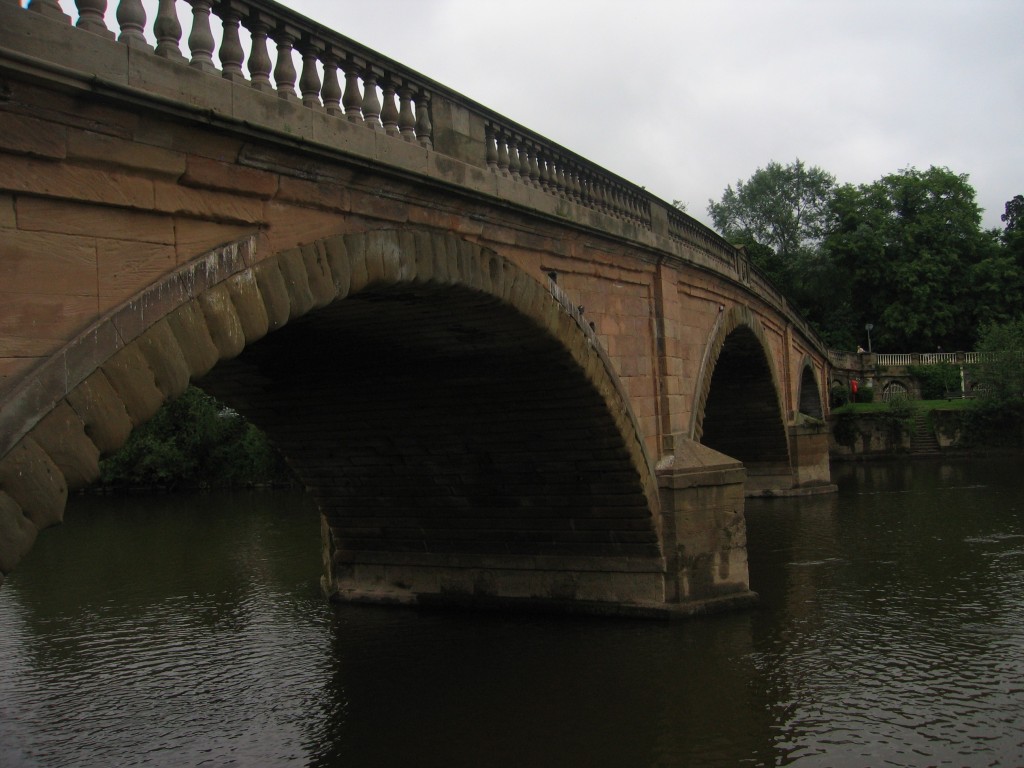Bewdley
Bark Hill
Bark Hill is a small roadside exposure in Bewdley.
The geology of Bark Hill dates to the Carboniferous period, approximately 310 million years ago. The sandstone was formed when rivers brought down material from the surrounding mountains onto low-lying areas which were once occupied by the forests and swamps that gave rise to the Wyre Forest coalfield.
Severn Valley Railway Station
The Bewdley Railway Station was built for the opening of the Severn Valley Railway in 1862. By 1963, the railway had passed from British Rail’s Western Region to the Midland Region and was beginning to succumb to the decline of rural rail traffic. The section between what is now Country Park Halt and Bewdley was used by coal trains from Alveley Colliery until 1969. The loss of this traffic made the fate of Bewdley Station inevitable and despite local objections all traffic ceased on Saturday 3rd January 1970. However, by this stage the section of the SVR from Bridgnorth to Hampton Loade was already being run as a preserved railway and the closure of Bewdley was a great stimulus for this operation to extend southwards. The society eventually purchased the route from Hampton Loade to just beyond Bewdley tunnel in 1971 and two years later moved the preserved lines headquarters to Bewdley. On the 18th May 1974, the station reopened for business.
The geology of the Severn Valley Railway Station dates to the Permian period, approximately 295 million years ago. The rock exposures are made solely of the Bridgnorth Sandstone Formation, a series of sandstones deposited in a desert environment.
An interpretation panel was produced for the Severn Valley Railway Station and can be seen here: Bewdley Railway Station Panel. The Holding PensThe Holding Pens is a small quarry located adjacent to the Severn Valley Railway viaduct. Slightly set back from the road, it is approximately 10m in depth, 10m high and 6m wide.
The geology of The Holding Pens dates to the Permian period, approximately 295 million years ago. The exposure and the building stone of the viaduct that forms the southern margin of the site, are comprised solely of the Bridgnorth Sandstone Formation, a series of sandstones deposited in a desert environment.
An interpretation panel was produced for the Holding Pens and can be seen here: Holding Pens Panel.
Bewdley Bridge
The present Bewdley Bridge is the third successive structure to have been built across the river. The earliest bridge, constructed of stone, was built in about 1447 on the site of the modern day bridge. It was destroyed in the War of the Roses and replaced by a timber bridge, which lasted until 1483. A second stone bridge was built, slightly down-stream of the old timber bridge. This structure lasted over 100 years, until parts of it were washed away in 1795. The distinguished engineer, Thomas Telford, was called upon to design a new bridge. At first a single span iron bridge was suggested, but the Coalbrookdale Iron Company refused to undertake the work as they could not supply stone for the abutments. After a number of other set backs a three arched stone bridge was decided upon. The bridge was constructed and opened in 1798 at a cost of £11,000.
There are a number of different geological formations that make up the building stone of Bewdley Bridge. The two most used are green Highley sandstone that makes up the arches of the bridge. This dates from the Carboniferous period, approximately 345 million years ago. The other well-used stone is a pink coloured sandstone dating from the Triassic period, approximately 241 million years ago.
St. Anne’s Church
St Anne’s Parish Church in the Town Centre is an impressive, Georgian building that has been a focus for worship since 1748. The present building dates back just over 250 years, the tower 50 years more, but there are records of a church on this site over 3 centuries earlier.
There is a huge variety of geological formations represented in the building stones of the church. From the green highly sandstone dating from the Carboniferous period, approximately 345 million years ago, to the red sandstones dating from the Triassic period, approximately 241 million years ago and the Cotswold limestones dating from the Jurassic period, approximately 173 million years ago.
Bewdley bookletA 20 page booklet following a trail of the geological features around Bewdley Town Centre, including both rock exposures and building stones. The booklet includes an overview of the ecological and archaeological interests of the five Champions sites visited en route. Copies of the booklet cost £2.50 each, and can be obtained from the Earth Heritage Trust or from Bewdley Museum.
The booklet can also be downloaded here: Bewdley booklet

